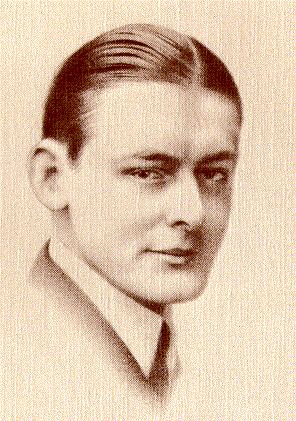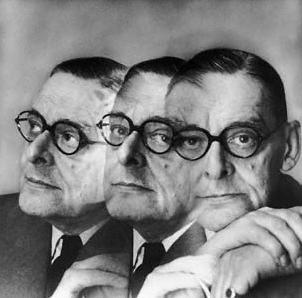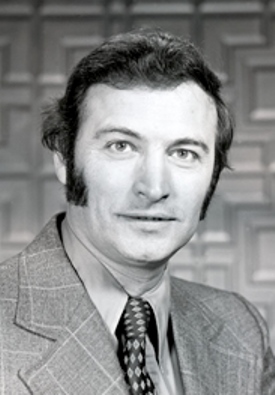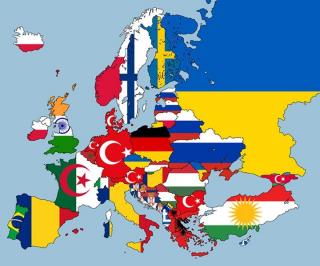T. S. Eliot is best known as the greatest poet of the twentieth century. Less known, at least in the popular imagination, is his substantial contribution to the rich legacy of traditionalist thought that emerged in the first half of the last century. Though not an affiliate of other important thinkers such as G. K. Chesterton, Hillair Belloc, Christopher Dawson or C. S. Lewis (indeed, Eliot and Lewis’ relationship was at times strained), nonetheless, Eliot is at least of equal stature. Testament to this is Roger Scruton’s devotion of an entire chapter to the poet in his recent work A Political Philosophy (2009). And not any chapter, but the final chapter. Significantly, Scruton, the most important conservative thinker of our time, grants Eliot the last word. In a similar vein, another influential traditionalist, Russell Kirk positioned Eliot as the bookend to the entire era of conservative thought initiated by Edmund Burke in his work The Conservative Mind: from Burke to Eliot (1953).
The key to understanding Eliot’s life and work involves grasping the central paradox that the “greatest literary Modernist should also be our greatest modern conservative.”1 It is possibly this paradox that has resulted in Eliot existing in the popular imagination as a radical first, and conservative second, or sometimes without the conservative part at all. But the two are inextricably related.

Young T. S. Eliot: “classicist in literature, royalist in politics, and Anglo-catholic in religion.”
Eliot was born in St. Louis, Missouri in 1888 to a New England family whose heritage extended to Puritan settlement of the New World in the seventeenth century. His education at Harvard was a natural progression for a young man born into such a milieu. In the nineteenth century, the intellectual and cultural weltanschaung of this milieu was strongly influenced by the Transcendentalist philosophy of Ralph Waldo Emerson and the theological ambiguities of Unitarianism, behind which loomed the revolutionary impetus of Romanticism. In one sense, Eliot’s life was a consistent reaction against his background. He identified a common thread of insincerity and egocentricity running through such liberalism, humanism, utilitarianism, individualism and Romanticism. Order was critical to his convictions,2 and this meant orthodoxy, aristocracy, classicism, hierarchy and collective tradition against the tyranny of the Romantic ego. He neatly expressed his outlook as a trinity of affiliation: “classicist in literature, royalist in politics, and Anglo-catholic in religion.”3 Having settled permanently in England in 1914, he was baptised into the Anglican church in 1927 and became a British subject.
Paradoxically, he put the birthright radicalism of his Puritan forbears to the service of his art. And his art was radical. Rejecting his immediate literary predecessors in the Anglo-phone world, Eliot instead fused the louche macabre of French Symbolistes such as Baudelaire and Laforgue with the visceral intensity of the English metaphysicals of the seventeenth century and the complex cosmology of Dante. His first collection of poems, Prufrock and Other Observations burst onto the High Modernist literary scene in 1917, followed by his most famous work, The Waste Land in 1922. Stylistically, these works scandalised conventional taste as Stravinsky had done and music and James Joyce was to do in fiction.
Eliot rejected outright the formulaic sweetness and sentimentality of a burnt-out, conventional Romanticism for a fragmented free-verse, characterised by arresting, urban imagery, decay, intense psychological anxiety. ‘The Love Song of J. Alfred Prufrock’ is a dramatic expression of the disintegration of the Romantic ego in the midst of a squalid modernity. The Waste Land completes a modulation from this temporal futility – Europe shattered in the wake of the Great War – to a vision of primal, timeless wisdom. The thunderous Sanskrit sound-bites in the poem’s Eastern climax associate the rejuvenating rain of a fertility ritual with the linguistic root of the Indo-European tongue, and aesthetically functions as a means of exposing the gulf of dissociation between a relativistic, materialistic modernity and the essence of tradition:
Ganga was sunken, and the limp leaves
Waited for rain, while the black clouds
Gathered far distant, over Himavant.
The jungle crouched, humped in silence.
Then spoke the thunder
[…]
Datta. Dayadhvam. Damyata.
Shantih shantih shantih 4
Beneath the infernal demi-monde of modernity (the product of humanism, the Enlightenment and destruction on an epic scale) Eliot attempted to resuscitate the ancient fertility rituals of sacral kingship of which he read in J. G. Frazer’s The Golden Bough and the Cambridge Ritualists and elevate that to his Modernist aesthetic. It was this sense for the primitive that impelled him to write that Stravinsky’s Le Sacre du Printemps (1913) seemed to
transform the rhythm of the steppes into the scream of the motor horn, the rattle of machinery, the grind of wheels, the beating of iron and steel, the roar of the underground railway, and the other barbaric cries of modern life; and to transform these despairing noises into music. 5
Indeed, the isolated flaneurs of his earliest poems evince awareness of the uncontrollable Jungian archetypes exploding from the collective unconscious to recall primal, timeless experience:
Among the windings of the violins
And the ariettes
Of cracked cornets
Inside my brain a dull tom-tom begins
Absurdly hammering a prelude of its own. 6
At times, these alienated youths delight in the propensity of these unconscious detonations to shock a self-satisfied bourgeoisie:
I thought of Fragilion, that shy figure among the birch-trees,
And of Priapus in the shrubbery
Gaping at the lady in the swing.
[…]
I heard the beat of centaurs’ hoofs over the hard turf
As his dry and passionate talk devoured the afternoon. 7
For the reactionary High Modernists such as Eliot, Ezra Pound and W. B. Yeats, myth, expressed in potent language, offered a means of ordering and integrating a disintegrating culture. With a nod to a Nietzsche’s idea of “the eternal return“, myth became “a means by which to adumbrate his vision of an ideal cultural order: permanent, organically unified, transcending history.”8 Eliot expressed it clearly enough in his review of Joyce’s Ulysses:
It [myth] is simply a way of controlling, of ordering, of giving a shape and a significance to the immense panorama of futility and anarchy which is contemporary history. 9
Moreover, myth was a pure form of tradition in the organic, Burkean sense. Eliot’s literary criticism, contemporaneous with The Waste Land, voiced this aspect. The poet must (note the imperative) write
not merely with his own generation in his bones, but with the feeling that the whole of the literature of Europe from Homer and within it the whole of the literature of his own country has a simultaneous existence and composes a simultaneous order. 10
and further, must evince awareness of:
the mind of Europe – the mind of his own country – a mind which he learns in time to be much more important than his own private mind – is a mind which changes, and that this change is a development which abandons nothing en route, which does not superannuate either Shakespeare, or Homer, or the rock drawing of the Magdalenian draughtsmen. 11
Reactionary and revolutionary in equal measure, Eliot’s Modernist principle of tradition was no antiquarianism, but rather confronted and spoke to and for the twentieth century. Importantly for conservative thought, reactionary Modernists like Eliot, Pound and Yeats articulated the sense of despair at the decline of Western civilisation. Furthermore, they steadfastly believed that culture, religion, society and language must be integrated. And this required the artist, rather than submit to emotion in the Romantic mode – mere whims of an individual – to seek a potency residual in the tradition, to transcend himself, a kind of “self-overcoming”, and thereby to put his art at the service of tradition. Aesthetically, this entailed attuning to something akin to what Jung termed “the residues of ancestral life.”12 Eliot put it another way:
What I call the ‘auditory imagination’ is the feeling for syllable and rhythm, penetrating far below the conscious levels of thought and feeling, invigorating every word; sinking to the most primitive and forgotten, returning to the origin and bringing something back, seeking the beginning and the end. 13
Beyond the radicalism of reactionary Modernism, Eliot was baptised into the Anglican communion, becoming a devout Christian, a naturalised British subject and an advocate of High Toryism in later works of social criticism. Significantly, his religious pre-dilections were to Anglo-Catholicism, which he saw as most perfectly preserving the cultural nexus between English culture, European Christianity at large, and the bedrock of Indo-European pagan ritual. His last major poetic statement, Four Quartets makes a pertinent statement about the deracination of language as an index of the devastation of culture:
Words strain,
Crack and sometimes break, under the burden,
Under the tension, slip, slide, perish,
Will not stay still. Shrieking voices
Scolding, mocking, or merely chattering,
Always assail them.
As Scruton notes, “Toryism would have lost all substance during the last century” were it not for Eliot.14 Interestingly, Eliot did not seem that much interested in Burke, who is rarely, if ever, mentioned in Eliot’s writing. Yet Eliot’s focus on tradition as connecting the unborn with the living and the dead makes him a successor to Burke. Eliot importance as a conservative lies in his anticipation of the challenges of post-modernism. In that, he forms a very real intellectual ‘mentor’ to Scruton. Further, his interest in English culture and the role of sacral kingship nod towards the radical traditionalism of the likes of Julius Evola, and anticipate a complex of ideas in recent works such as Andrew Fraser’s The Wasp Question (Arktos, 2011) that are directed toward the problem of multiculturalism. Aspects of his social criticism drew heavily on Southern Agrarianism and his lifestyle was High Tory. In so many ways, T. S. Eliot was a flashpoint of conservative strands in the twentieth century.
– R. Brennan
The author is a free-lance writer with a particular interest in literature, language and perennial wisdom.
End Notes
- Roger Scruton, “T. S. Eliot as Conservative Mentor” Intercollegiate Review (Orientation issue, 2008) p 67.
- Barry Spurr, ‘Anglo-Catholic in Religion’: T. S. Eliot and Christianity (Lutterworth Press, 2010), p 88.
- T. S. Eliot, For Lancelot Andrews: Essays on Style and Order (Doubleday, Doran and Co., 1929) p vii.
- Eliot, “The Waste Land” (1922) in The Complete Poems and Plays of T. S. Eliot (Faber & Faber, 1969). Subsequent references are to this edition.
- Eliot, “London Letter”, The Dial, vol. LXXI, no. 4 (October, 1921) pp 452 – 455.
- “Portrait of a Lady”, Prufrock and Other Observations (1917).
- “Mr Apollinax”, Prufrock and Other Observations (1917).
- David Spurr, “Myths of Anthropology: Eliot, Joyce, Lévy-Bruhl”, Publications of the Modern Language Association vol. 109, no. 2 (March, 1994), p 278.
- Eliot, “Ulysses, Order and Myth” (1923) in Frank Kermode (ed.), Selected Prose of T. S. Eliot (Faber & Faber, 1975) pp 177 – 178.
- Eliot, “Tradition and the Individual Talent” in The Sacred Wood, p 49.
- Ibid., p 51.
- Jung, “On the Psychology of the Unconscious” in Read et. al. (eds.), Collected Works, vol. 7, p 77.
- Eliot, The Use of Poetry and the Use of Criticism (1933) in John Hayward (ed.), T. S. Eliot: Selected Prose (Penguin, 1953) p 94.
- Scruton, “T. S. Eliot as Conservative Mentor”.





A well needed and refreshing examination of the value that Modernism can have. In particular – the author picks up this idea of “strands” of Conservative thought that require picking up – perhaps even plaiting! Too many of today’s establishment types cling on to a selfish romanticism, and they leave Conservatism a house divided, in violation of Kirk’s wise tenth principle.
Remember that Eliot published The Waste Land in 1922. The situation thus described, that is the wreckage of Western culture has not improved one smidgen of an iota since then. Indeed the situation is much much worse by many degrees.
And of course World War II finished off the process of the destruction of Civilization which began with World War I.